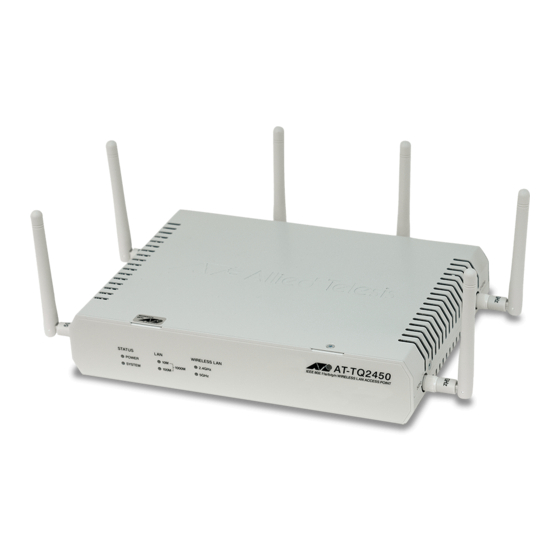
Allied Telesis AT-TQ Series Access Point Manuals
Manuals and User Guides for Allied Telesis AT-TQ Series Access Point. We have 2 Allied Telesis AT-TQ Series Access Point manuals available for free PDF download: User Manual
Allied Telesis AT-TQ Series User Manual (174 pages)
Enterprise-class Wireless Access Points with 2.4GHz and 5 GHz Dual-band Radios
Brand: Allied Telesis
|
Category: Wireless Access Point
|
Size: 6 MB
Table of Contents
Advertisement
Allied Telesis AT-TQ Series User Manual (168 pages)
AT-TQ Series Enterprise-class Wireless Access Points with IEEE802.11a/b/g/n Dual Radios
Brand: Allied Telesis
|
Category: Wireless Access Point
|
Size: 6 MB

